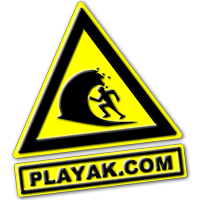\"double\" release edge is kind of vague, and has been used as a simple way to describe some kayaks' release edges. Just because it has the word \"double\" in it does not really mean that it will release from the water better. It's kind of misleading.
Having said all that.....
what really makes the water release from the edge of your kayak is that it has travelled along a fairly flat surface for a little bit then when it reaches the end of the kayak there is a super sharp edge. If the edge is round, then water tends to like to climb up on it, and make that round edge feel \"sticky\"
Take a close look at an average surf board.
The front section of the rail is rounded so that it will stick to the water when you lean it up on edge. That allows you to drive the board forward without it slipping out as much.
As you progress down the rail towards the back, you'll notice that at some point the rail gets a really sharp edge. This allows water to come flying off the tail WITHOUT sticking and slowing you down. Because the tail has to be so loose, people mount fins to keep the board from spinning all over the place.
Kayak makers could call just about any current designs \"double\" release edges because they have one sharp edge where the flat hull turns into the next chine, and another edge as the transition to the sidewall. Whether that is a flat surface, or a concave is a matter of debate for designers and marketting folks.
\"Release\" and \"Carve\" are not mutually exclusive, but they do use very different design concepts to be achieved.




